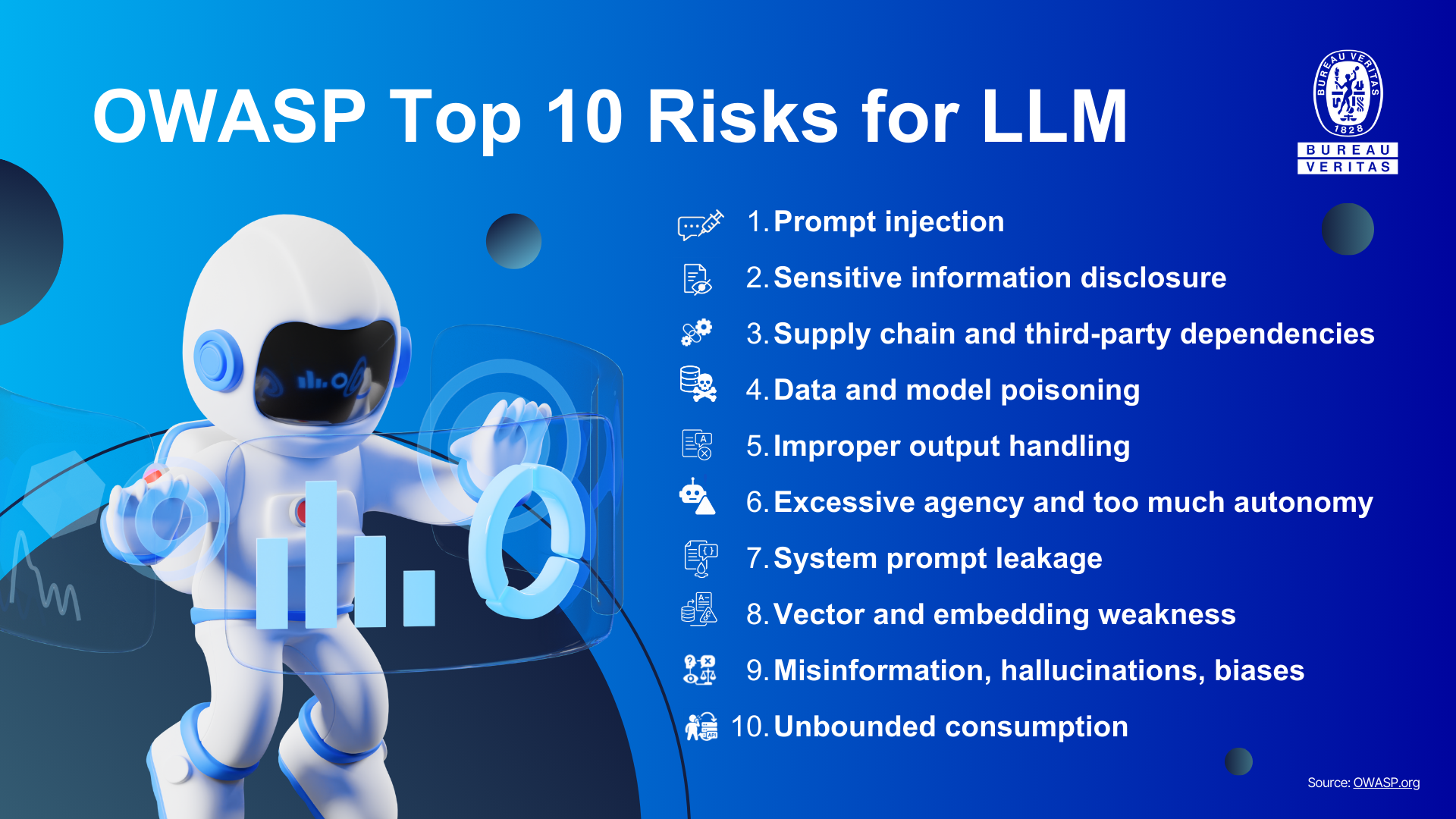AI Pentesting
Are you deploying an AI-powered application? Are you sure attackers can't compromise it? Our pentesters can assess your AI system and show you how to improve its security.
... > Vulnerability Assessment / Penetration Testing (VAPT) > Secure your AI systems with AI Pentesting
Using AI in your business? AI Pentesting shows what can go wrong – and how to fix it
Chances are high your company deploys an AI application or system: since late 2022, when ChatGPT appeared, AI has transitioned from a cutting-edge innovation to a core component helping business operations. Gartner reports that almost one-third of companies surveyed uses generative AI and large language models (LLMs). However, AI applications, particularly those using LLMs, are exposed to several risks and vulnerabilities.
Using a variety of tactics, attackers are able to steal or alter data from AI applications and can manipulate AI systems to do things they shouldn't, causing financial and reputational damage. Examples include: rogue chatbots that swear at customers, AI systems that are manipulated to give out large refunds, and leaked sensitive company information. This means securing AI applications has become crucial.
We can help secure your AI application
Our pentesting service for AI applications can help you thoroughly evaluate the security of your AI applications. We can help you uncover issues in both the language model and its integration with components such as web search, code execution, API calls, and guardrails.
Through simulated attacks and through the use of established cybersecurity frameworks, we give you clear insight into the weaknesses of your AI-powered applications and deliver a practical report with steps for improvement.
How to deal with AI security: our method
Using thousands of tests, Secura has developed a comprehensive methodology to assess the security of AI systems, based on threat modeling, developments in academia, industry, threat actors, and incidents.
We use internationally recognized models for testing AI security. Currently, there are few frameworks that specifically target the risks associated with AI technologies. The Open Worldwide Application Security Project (OWASP) offers one of the few widely recognized models: The OWASP Top 10 Risks for LLMs and GenAI Applications. We use this model as a standard for all AI security assessments.

Our expertise
Secura is the first to create a methodology with thousands of security tests and a structured methodology to assess AI systems. We build on more than two decades of expertise in cybersecurity. Our testing team performs hundreds of security tests each year. All testers are certified to a minimum standard (eWPT), but most have multiple certifications, such as OSCP, OVSE, eCPPT, GIAC GPEN. This team can perform virtually any security test.
The 3 steps of Pentesting for AI applications
01
Threat Modeling to assess risks
Depending on the level of depth that you are looking for, we can optionally start with Threat Modeling: this helps to know from what perspective threats arise and how applications or systems can be attacked. The goal of Threat Modeling is to give you a complete picture of the threats and possible attack routes.
The main difference between traditional Threat Modeling and AI-related Threat Modeling is that the risks and threats are different. For this reason, in addition to one of the frameworks used in traditional Threat Modeling, we use the use the OWASP Top 10 Risks for LLMs as a guiding framework.
02
Running tests - using prompts
The way to test an LLM part of an application is by sending messages, called prompts. Therefore, to assess the majority of the OWASP Top 10 Risks we first craft and send prompts, or 'prompt injection' (Top 10 #1). Using prompt injection, we then assess the other risks, like sensitive information disclosure (#2) and improper output handling (#5). Threat Modeling can make this process much more effective, because it provides a clear overview of the relevant threats.
We've built a database with thousands of carefully curated prompts mapped to OWASP Top 10 for AI. During the AI Pentest we use three types of prompts:
- Prompts freely available from academic or industry security benchmarks (for instance AIR-Bench, HarmBench, and HEx-PHI) and jailbreaking techniques (such as Do Anything Now, JailbreakBench, and Best-of-N Jailbreaking).
- Prompts derived from public guidelines and known incidents.
- Proprietary prompts and techniques developed by Secura’s AI experts.
03
Thorough reporting
Following the AI Pentest, you receive a comprehensive report.
Tests that successfully demonstrate risk exploitation are grouped and analyzed within the report. Each OWASP Top 10 risk category is mapped to the threat model, a CVSS v3 score, and relevant CWE identifiers to give clients a clear understanding of the risk level.
For each category, we also provide actionable recommendations to help you strengthen your AI-powered solutions against cybersecurity threats.
Request a Quote for Your AI Pentest
Do you want to secure your AI applications? Please fill out the form and we will contact you within one business day.

Why choose Secura | Bureau Veritas
At Secura/Bureau Veritas, we are dedicated to being your trusted partner in cybersecurity. We go beyond quick fixes and isolated services. Our integrated approach makes sure that every aspect of your company or organization is cyber resilient, from your technology to your processes and your people.
Secura is the cybersecurity division of Bureau Veritas, specialized in testing, inspection and certification. Bureau Veritas was founded in 1828, has over 80.000 employees and is active in 140 countries.





